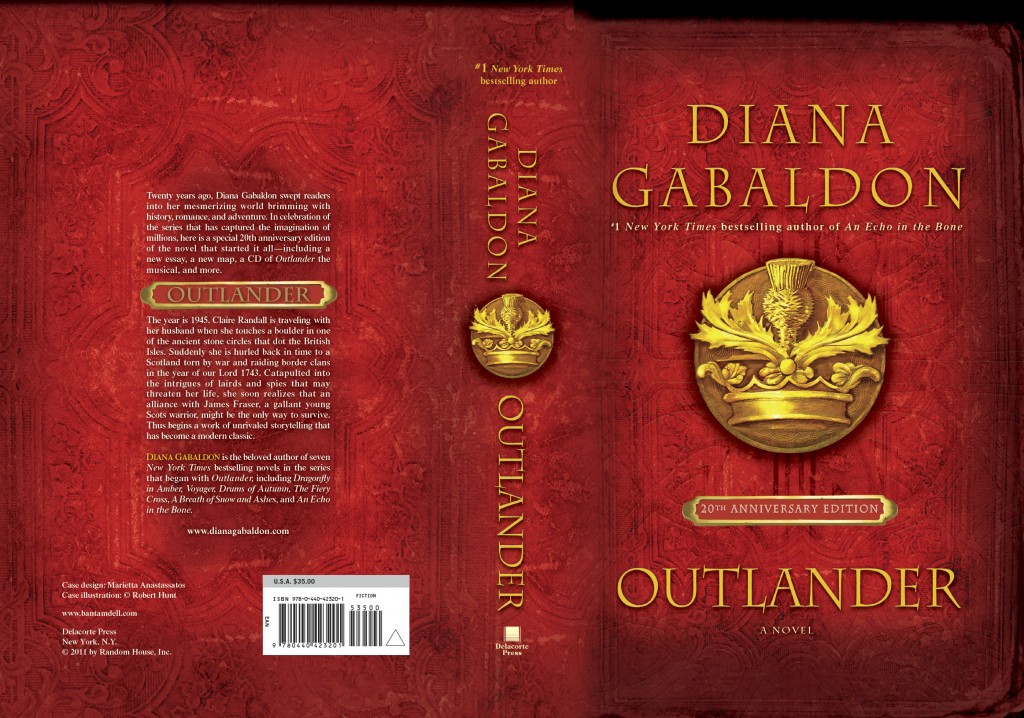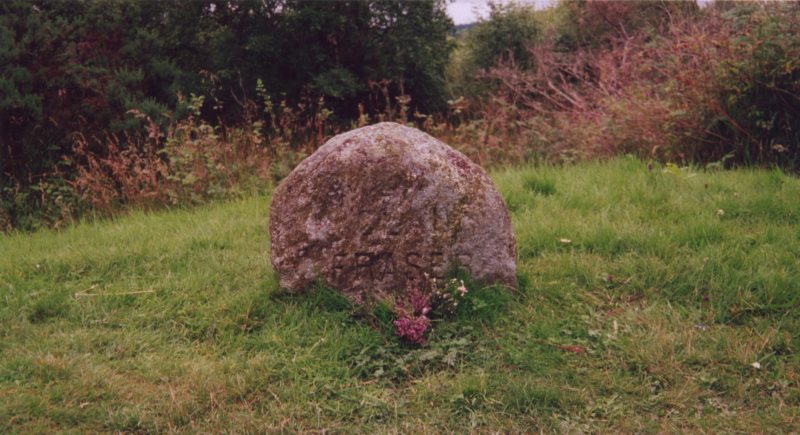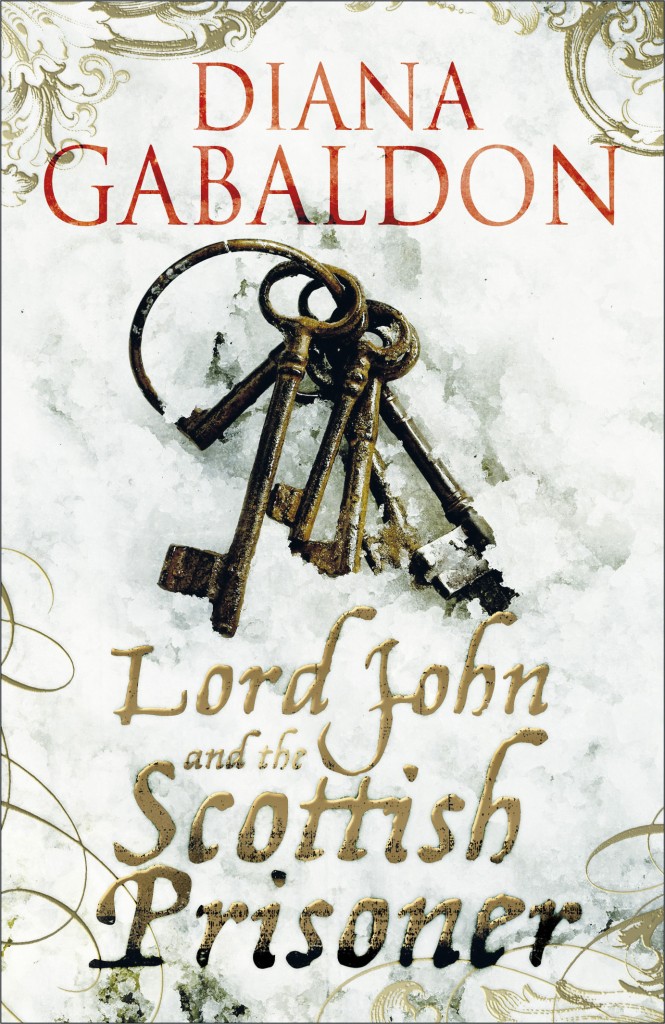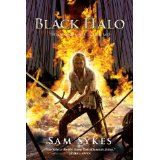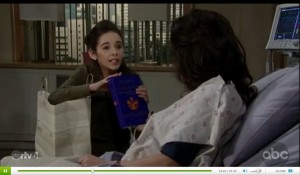“”This is a morning my father never saw,” Jamie said, still so softly that I heard it as much through the walls of his chest, as with my ears. “The world and each day in it is a gift, mo chridhe-no matter what tomorrow may be.”
I sighed deeply and turned my head, to rest my cheek against his chest. He reached over gently and wiped my nose with a fold of his shirt.
“And as for taking stock,” he added practically, “I’ve all my teeth, none of my parts are missing, and my cock still stands up by itself in the morning. It could be worse.”
–The Fiery Cross, Chapter 58: “Happy Birthday To You.” Copyright 2001 Diana Gabaldon.
HAPPY MAY DAY! And many, many thanks to all of you who have sent me messages wishing James Alexander Malcolm MacKenzie Fraser a happy 290th birthday. {g}
My husband was just asking me if there was a reason why I chose May 1 for Jamie’s birthday. In fact, there is—or there are, rather. To begin with, I thought it might have something to do with Claire’s passage through the stones, which happened on Beltane (April 30). (As it was, it didn’t really seem to have much to do with that, but that’s sort of what I had in mind to begin with.)
Beyond that—I knew Jamie was a Taurus, so obviously born sometime in May (ask me how I know this; my husband and all three children are born in May (this is the fault of Arizona State University, where I used to be a professor, and which said (at the time), “You can have all the maternity leave you want, but we aren’t going to pay you for any of it.” To which I replied, “Fine. I’m on a 9-month academic-year contract, and you don’t pay me in the summers anyway. I’ll have babies in May.” (A Ph.D. in Biology has to be good for something, after all))). My husband’s birthday is May 3, but I didn’t think it was right to make him share his birthday with Jamie, so….there you are. May 1.
(I have had assorted people cast Jamie’s horoscope, and assure me that yes, indeed, he is a Taurus. I never doubted this.)
Anyway, moving right along here—in Other May News:
LEPRECON 37 – May 6-8
I will be appearing at LepreCon 37, an sf/f con held in Tempe, AZ next weekend. The con runs May 6-8, but I’ll be there only on the 7th and 8th. The location is the Tempe Mission Palms Hotel, and here is the con’s website.
I’ll be doing the following appearances:
(panel) LIT – HOW TO DO A READING — Sat 10a-11a, Joshua Tree
(panel) LIT – DIY SOCIAL MEDIA – Sat noon-1p, Xavier
READING – Sat 2p-230p, Boardroom
AUTOGRAPHING — Sat 230p-330p, Dealers Room
(panel) LIT – OUR FAVORITE MILITARY SF – Sun 10a-11a, Xavier
(panel) LIT/MED – BOOKS TO MOVIES — Sun 3p-4p, Xavier
Now, on my way home Saturday from LepreCon, I’ll be stopping at the COMIC ZONE bookstore for a quick one-hour signing, as part of their “Free Comics!” Day festivities:
Location:
Comic Zone
5909 N. Granite Reef, rd.
Scottsdale, AZ 85250
480-483-2685 for more info
This appearance will naturally be focused mostly on THE EXILE, as it’s a graphic novel, but if y’all have other books you’d like signed, I’d be happy to do that.
KABAM! (Kingman Area Books Are Magic) –aka the Kingman (AZ) Book Festival – May 12-14
I couldn’t begin to remember what-all I’ll be doing for this festival, but it ranges from school visits and public autographings to panels, readings, and all sorts of stuff. I’ll be there for three days, and busy most of the time, let’s leave it at that. {g}
SCOTTSDALE PUBLIC LIBRARY AUTHORS AND APPETIZERS – May 20th , 7:00 PM.
This is a nice event, held at the Scottsdale Public Library, wherein they invite a number of different authors, each of whom does a quick 7-10 minute talk and is then available to chat and sign books—and they provide food!
(There are several websites where you can find more detail and/or buy tickets: here’s one.)
Right, see you at one of these events—and if not…I’ll post the schedule for June/July/August a little later. Meanwhile, in Other Interesting News:
THE UNABRIDGED AUDIOBOOK FOR A BREATH OF SNOW AND ASHES IS NOW AVAILABLE THROUGH AUDIBLE.COM!!!
I’ve explained (roughly ten million times) why THE FIERY CROSS and ABOSA were not available via Audible.com—owing to restriction in the contract with Bantam Audio, who do the (disgustingly eviscerated, bloody mangled shreds) abridged audio versions, we were not allowed to sell the unabridged versions through retail outlets while the original license (ten years from date of print publication) was in effect.
The licenses to earlier books have expired and been revoked, thus preventing those abridged excrescences from being sold any longer, and ECHO was fortunately not covered under the earlier contract (so there has never been and never will be an abridged audio version). Great. Well, THE FIERY CROSS license expires this November, and the instant it does, FIERY CROSS will also be available via Audible.com and anywhere else audiobooks are sold.
The license for ABOSA, though, doesn’t expire until 2014. We tried to get Bantam Audio to allow us to sell the unabridged version now (without revoking their abridged one), but they wouldn’t budge. So—in order to make the whole series available in unabridged form as soon as possible—we (me and my agent) did them a deal. They go on selling the abridged version until 2014 (at which point we cut them off at the knees), but meanwhile we release the unabridged version in retail markets—and share the income with them.
So that’s why ABOSA is now available and FIERY CROSS isn’t yet. It wasn’t worth doing a deal to get the unabridged version into retail outlets six months earlier than it will happen anyway. But come November, ALL the OUTLANDER and LORD JOHN books will be available in Unabridged versions through any retail outlet you care to use!
Posted on May 02, 2011 8:57 AM

